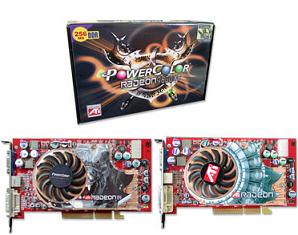Radeon 9800 XT

On September 30, the Canadian company ATI celebrated with great pomp the release of two new products: RADEON 9800XT (former R360 and RADEON 9600XT (former RV360). So, R360. How did it differ from its predecessor? It is known that it had a core frequency of 380 MHz, and the memory frequency depends on the version: a 128 MB card is equipped with DDR with a frequency of 340 (680) MHz, and a 256 MB card is equipped with DDR-II with a frequency of 350 (700) MHz.
The RADEON 9800 XT had frequencies of 412/365 (730) MHz and was equipped with 256 MB of DDR memory. At the same time, the card itself was changed, it used enlarged 256-megabit memory chips, as a result of which there are not 16 of them, but 8.
That's why the release of R360 pursued two goals: to replace and oust the less popular and unsuccessful RADEON 9800 PRO 256MB from the market, and to confirm ATI's leadership crown in 3D graphics in terms of performance.

| Name | Radeon 9800XT |
| Core | R350 |
| Process technology (µm) | 0.15 |
| Transistors (million) | 115 |
| Core frequency | 412 |
| Memory frequency (DDR) | 365 (730) |
| Bus and memory type | DDR II - 256bit |
| Bandwidth (Gb/s) | 23.3 |
| Pixel pipelines | 8 |
| TMU per conveyor | 1 |
| textures per clock | 8 |
| textures per pass | 16 |
| Vertex conveyors | 4 |
| Pixel Shaders | 2.0 |
| Vertex Shaders | 2+ |
| Fill Rate (Mpix/s) | 3296 |
| Fill Rate (Mtex/s) | 3296 |
| DirectX | 9.0 |
| Anti-Aliasing (Max) | MS - 6x |
| Anisotropic Filtering (Max) | 16x |
| Memory | 256MB |
| Interface | AGP 8x |
| RAMDAC | 2x400 MHz |
The Radeon 9800 XT was not something fundamentally new, but just a faster continuation of the 9000 line from ATI.



